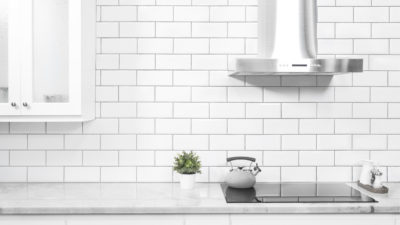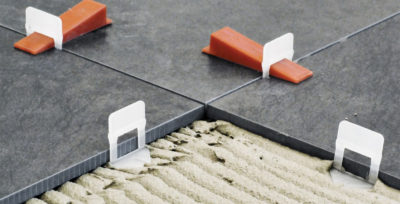Surface Preparation
All too often the main issue with most tile installations is inadequate preparation and not how the installer put the tile down. As with most elements of construction, everything is predicated upon layers, and preparation is the first. In South Florida, most contractors are tasked with laying tile over a concrete subfloor. In general, this presents fewer issues than a traditionally wood framed floor with sheathing but still requires strict attention to detail.
If there is existing flooring, in almost all cases it should be removed prior to the installation of tile. Existing flooring does not provide a stable sub-surface to accept the new flooring and will ultimately result in a major failure of some type (cracking, delamination, tenting, etc…). When working with your contractor insist that the old flooring is removed. This will invariably end up costing more money up front, but will result in a superior installation and protect you from paying double or triple replacing it (don’t expect any contractor who doesn’t strip the existing floor to guarantee their work).
After the existing flooring is removed, the very next step is to check for the floor for level. An educated contractor will survey the area, find the lowest points and determine the best way area should be leveled. There are many ways this can be accomplished but the two most common are self-leveling compounds and mortar beds. Self-leveling compound such as Mapei Self-Leveler, Custom Building Products LevelQuick, and Ardex K-15 are polymer based compounds that are poured over an existing substrate and seek their own level. In certain instances, the contractor may opt to install the tile over a bed of mortar that is mixed, packed and leveled prior to installing the tile. Regardless of the leveling method chosen, it is imperative that the surface be completely free of dirt, dust and all other forms of debris. This small but important step promotes proper adhesion and ensures a stable subfloor on which to lay the tile.
An optional but wise decision is to install a specialized underlayment over the newly prepared sub-floor prior to laying down the tile. The most popular and best option is Schulter-Ditra. Schluter-Ditra acts as an uncoupling layer (forgiving shear interface) which neutralizes the movements commonly associated with cracking and delaminating. Schulter-Ditra also acts as a vapor management system by providing a route for excess moisture and vapor to escape from the substrate that could otherwise cause damage to the tile layer above.





